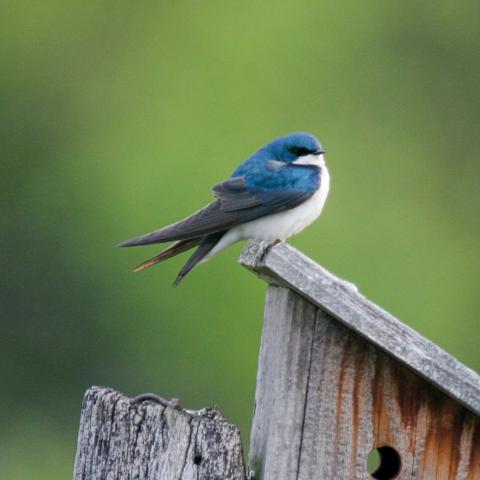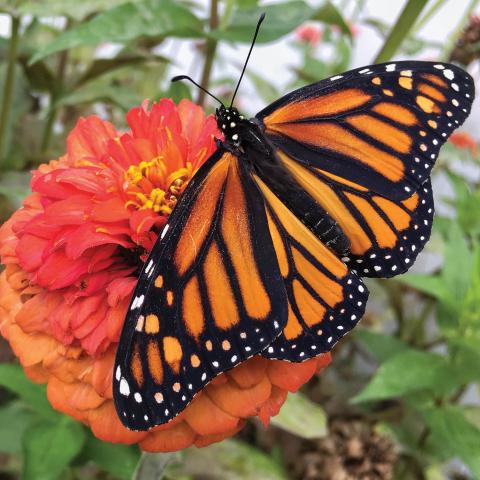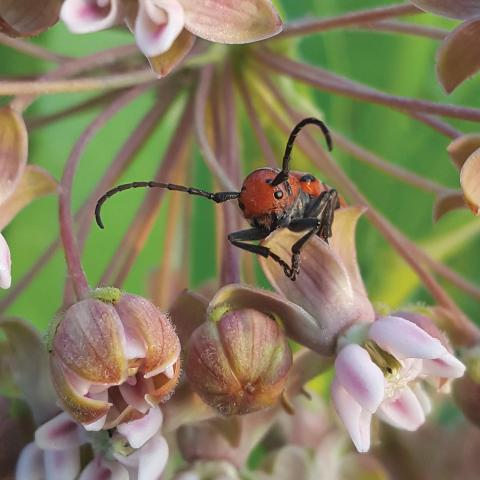
Tips for Being Nature Friendly at Home
We are all capable of taking actions in our own lives that have positive impacts on the health of our local environment. Here are a few ways that you can make a difference from your own home.
Choose Native Plants
Plant native plants in your yard or garden to support local wildlife. Non-native plants do less to support local wildlife with food, shelter and cover. For example, native oak trees support more than 500 native species of caterpillars, but no native caterpillar will feed on the leaves of the butterfly bush (Buddleia), an invasive plant from Asia.
Native plants are adapted to local conditions and often don’t need extra watering, fertilizers or pesticides to thrive. You don’t need a large area to have a native garden; many native plants can be grown in containers in small spaces. You can find native plants at local nurseries, many of which offer discounts for Wissahickon Trails Supporters.
Make Your Home Safe for Birds
The birds in your backyard don’t see the windows on your house the way you do. Instead, they see reflections of the sky and surrounding habitat, and when they try to fly to trees, shrubs or blue skies that they perceive, they collide with solid glass. While they might fly off after a window collision, most birds will sustain internal injuries or concussions and do not survive. With an estimated one million window strikes per day in North America, this is likely the greatest human-induced cause of bird population declines.
The good news is, you can easily make your windows safer by using decals or screens. Place bird feeders either close to a window (less than three feet away) so birds can’t pick up enough speed to be injured if they hit the glass, or far away (more than ten feet) so there is plenty of space for them to maneuver.
Become Stormwater Ready
Stormwater runoff containing harmful pollutants picked up from lawns, pavement and other surfaces is the number-one threat to the health of our waterways today. You can help reduce stormwater pollution right from your home by using the “Homeowner’s Stormwater Handbook.” This guide was written by Philadelphia Water and the Partnership for the Delaware Estuary and can be found on our website, wissahickontrails.org.
Consider a Rain Garden
If you have water issues in your yard, a rain garden may help. Rain gardens are strategically located to allow stormwater to soak into the soil. These gardens also use native plants, and they can serve double duty as a pollinator garden or bird garden, depending on your plant selection.
Yard Care Strategies
If you live along the Wissahickon Creek or a tributary, don’t mow all the way up to the water. Leave a buffer in your backyard of native trees, shrubs or even tall grasses to limit erosion and property loss. When raking leaves, place them into a yard bag instead of in the street or storm drains to help keep our waterways clear. Or, use leaves in your lawn and garden as natural mulch. Use less fertilizer, and never use it 24 hours before forecasted rain, as rain can wash fertilizers into our waterways.
In Your Driveway
Wash your car in your grass or at a car wash where water is processed, so detergents don’t run into storm drains and into the creek. When preparing for snow and ice, use less rock salt, and sweep up any excess salt after the ice has melted. Never pour liquids or trash down a storm drain.
Be a Nature Friendly Pet Owner
There are a few simple steps you can take to protect your pets, local wildlife and the Wissahickon Creek. Always pick up your pet’s poop, as it contains bacteria, and rain can wash these pollutants directly into our waterways. Keep your pets on leash to ensure they and any wildlife they may come in contact with are safe from harm. Be sure to vaccinate your pet; in the unfortunate event your pet does come in contact with a wild animal, vaccinations will protect them against diseases such as rabies, canine distemper, feline distemper and leptospirosis. And please keep cats indoors — billions of birds are killed each year by outdoor cats.
On Your Mobile Device
Whether you’re in your yard or at one of our preserves, you can help track the plants and animals that live in the Wissahickon watershed using your computer or mobile device. Participating in one of Journey North’s projects or sharing backyard observations with the eBird or iNaturalist apps are excellent ways to contribute meaningful data at local and national levels.
Visit wissahickontrails.org/take-action/take-action-at-home for more information and online resources.








